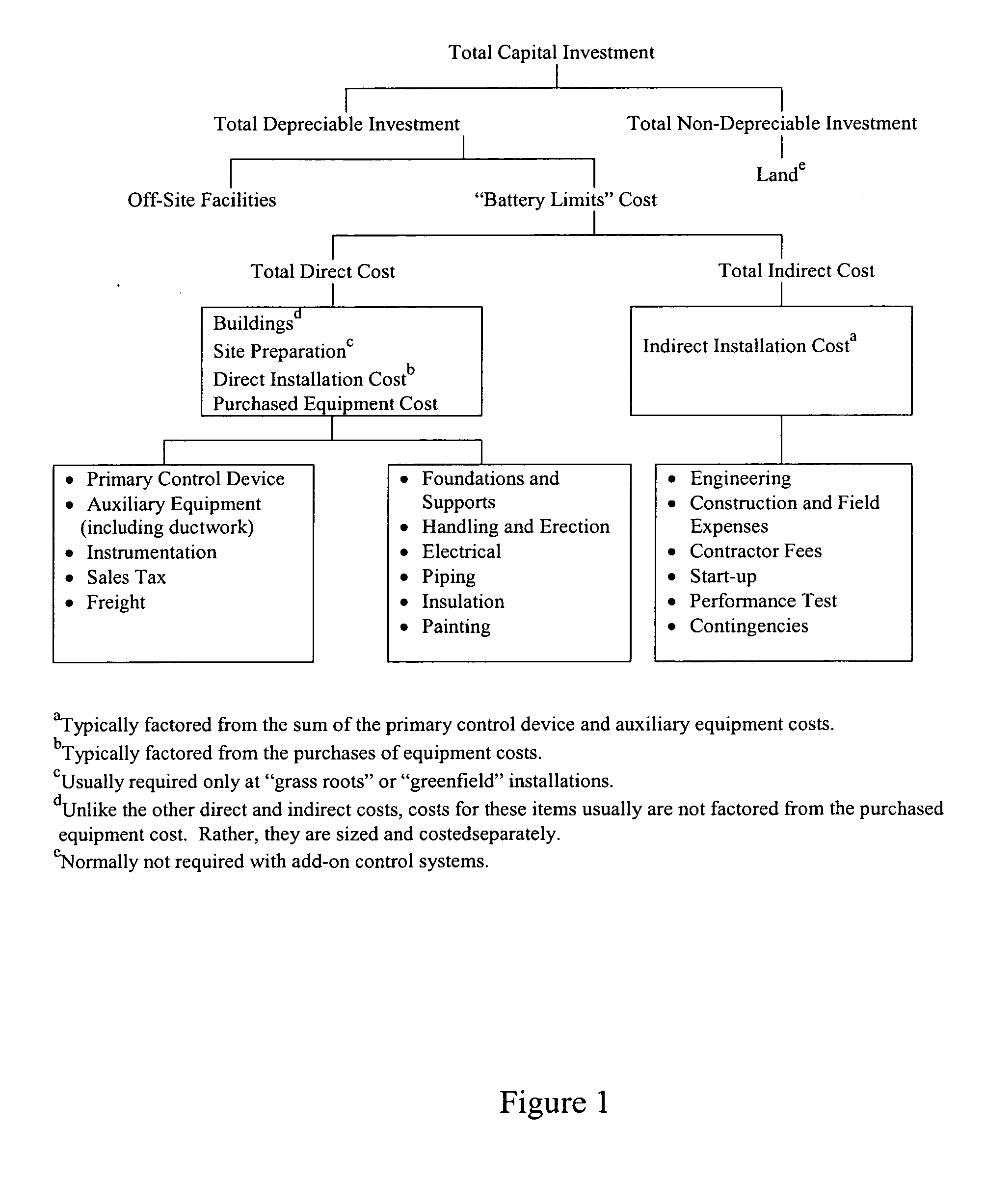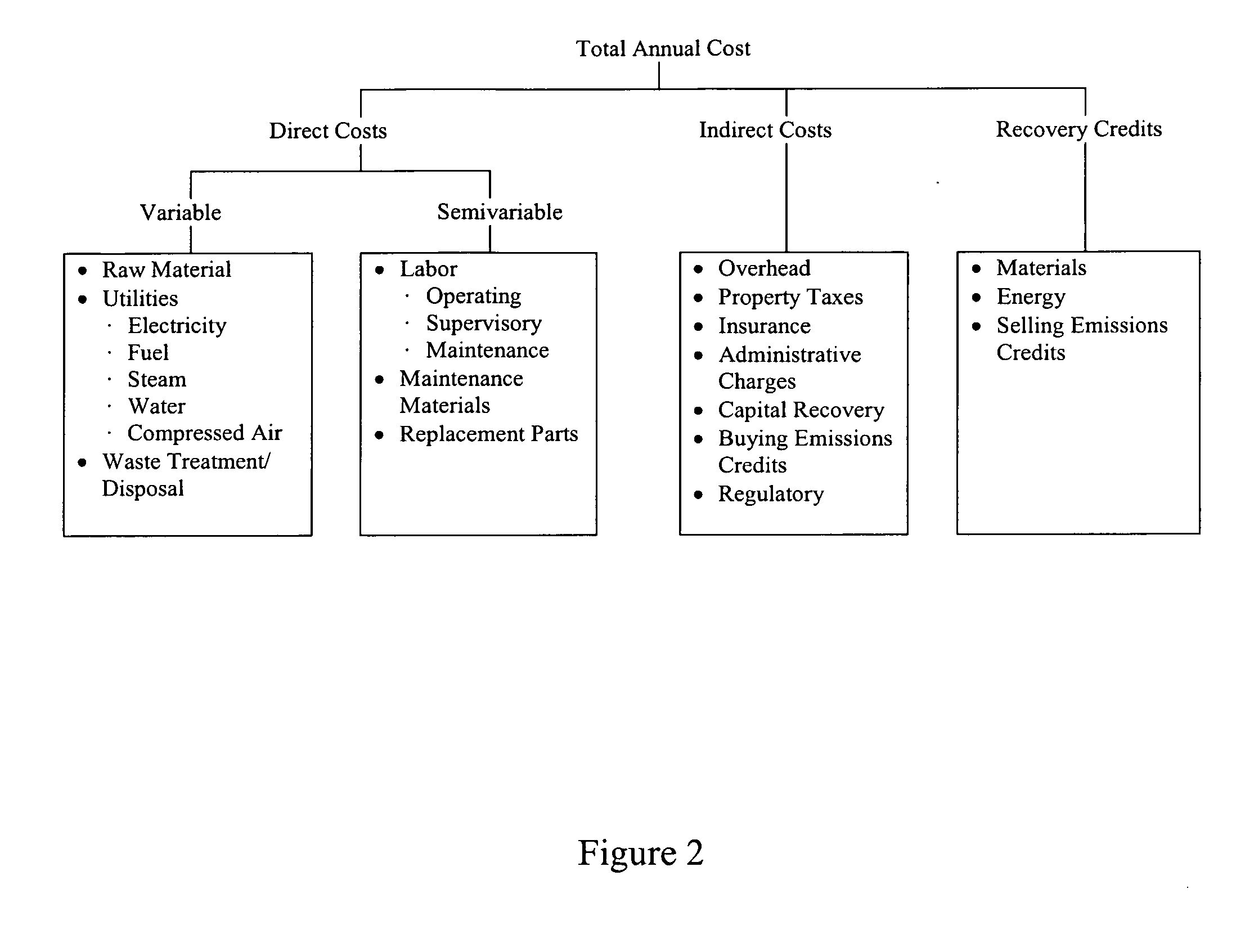Methods of operating a coal burning facility
a technology of coal burning facility and method, which is applied in the field of methods for operating coal burning facilities, can solve the problems of acid rain and other environmental problems, environmental and health problems, and the inability of alternative sources of energy to replace a significant fraction of the world's use,
- Summary
- Abstract
- Description
- Claims
- Application Information
AI Technical Summary
Benefits of technology
Problems solved by technology
Method used
Image
Examples
example 1
[0148]Coal is burned in a positive draft tangentially fired boiler to generate electricity for consumer use. Powdered coal (75% passing 200 mesh) is fed to the boiler. Before introduction of the powdered coal into the boiler, a powder sorbent is added to the coal at a rate of 6% by weight, based on the rate of coal being consumed by combustion. The powder sorbent contains 93% by weight of a 50 / 50 mixture of cement kiln dust and lime kiln dust, and 7% by weight of calcium montmorillonite. At the same time, a 50% by weight solution of calcium bromide in water is dripped onto the coal at a rate of 0.1 to 2% by weight based on the rate of consumption of coal by combustion. Fly ash samples are collected before addition of sorbents (baseline), and after addition of the powder and liquid sorbents. The levels of chlorine and heavy metals are determined according to standard methods. Results are in Table 1.
TABLE 1Fly Ash Composition with and without sorbentsTest - After sorbentadditionBaseli...
example 2
[0149]Next the ash samples are tested according to the TCLP procedure of the EPA, as described above, to determine the acid leaching thresholds of key elements. Results are in Table 2.
TABLE 2Fly Ash TCLP Test ResultsBaseline - priorEPAto sorbentTest - withThreshold Limitadditionsorbent additionElement(ppm)(ppm)(ppm)Arsenic5.00Barium100.000.8140.313Cadmium1.00Chromium5.000.030Lead5.000.5130.096Mercury0.200.0950.078Selenium1.00Silver5.003.8353.291
[0150]It is seen in these non-limiting Examples that use of the sorbents increases the level of several heavy metals found in the fly ash. For example, arsenic, cadmium, chromium, lead, mercury, and chlorine are present at higher levels in the test ash than in the baseline. This is believed to represent increased capture of these exemplary elements in the ash. The increased level of zinc in the test ash is unexplained. However, it could be due to the fact that a great deal of de-slagging is observed from the boiler tubes upon use of sorbents ...
PUM
| Property | Measurement | Unit |
|---|---|---|
| temperature | aaaaa | aaaaa |
| temperature | aaaaa | aaaaa |
| flame temperature | aaaaa | aaaaa |
Abstract
Description
Claims
Application Information
 Login to View More
Login to View More - R&D
- Intellectual Property
- Life Sciences
- Materials
- Tech Scout
- Unparalleled Data Quality
- Higher Quality Content
- 60% Fewer Hallucinations
Browse by: Latest US Patents, China's latest patents, Technical Efficacy Thesaurus, Application Domain, Technology Topic, Popular Technical Reports.
© 2025 PatSnap. All rights reserved.Legal|Privacy policy|Modern Slavery Act Transparency Statement|Sitemap|About US| Contact US: help@patsnap.com


